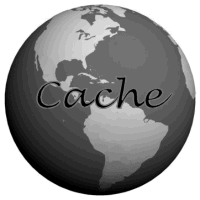Recently, we have released online Studio v4.3.70-0-155, new version for the Monitoring & Reports tool (v1.8.0-0) and new version for the Android player app (v4.4.72-0-177).
These versions include 2 new features we wish to tell you about:

Location feature
Now, you can set latitude and longitude coordinates to any screen, in the online Studio. You will see the latitude and longitude only in edit mode of a screen.
In the Monitoring & Reports tool, you can see a new maps icon in the Screen Monitor. Just click it and it will show you a map of your deployed screens. you can zoom in/out in the map. Once you hover the mouse cursor over a screen in the table, its corresponding icon on the map will start bouncing.
In the map, you’ll see the screens according their latitude and longitude coordinates. For screens which you haven’t set their coordinates, they will appear according their IP address (which can even be the ISP’s IP address), so better set their latitude and longitude manually.
How to set latitude and longitude?
1) Enter the website https://www.latlong.net/
2) Place a name (better an address) and press the “Find” button.
3) The place will appear in a map in the bottom of the page. You can relocate the mark, for better fine tuning.
4) Copy the values of the “Latitude” and “Longitude” text boxes to the corresponding controls of your screen settings in your online Studio user account and save.
5) Refresh the Monitoring & Reports tool and you’ll be able to see that screen in the right place on the map.
Android cache location
The new native Android app version (4.4.71-0-177) has an ability to use either the external storage (default) or internal storage (usually, has bigger space) or a custom path (i.e. disk-on-key flash drive such as USB stick or SD card) for storing the app’s cache (which is mainly your media files, which are used in your playlists and are stored locally on your Android player).
This can be useful, especially in some Android players which have only 8GB of storage and that storage (due to historically reasons) is divided into “internal storage” and “external storage” (sometimes called “NAND”), which means that the media files of the NoviSign Android app can reside only in one place, hence won’t be able to use the whole 8GB, but much less than that (like in Minix Neo X7 mini, for example).
How to set the cache location?
1) In the app’s settings (click the gear icon in the top right corner of the entrance screen of the app, in order to get there).
2) Scroll down to the “Advanced” block of settings in the bottom. There you’ll find the “Cache Control” option. Click it, in order to access the cache menu.
3) While in there, click the new “Cache Location” option. This will open a popup window, where you should choose between “External storage (default)”, “Internal storage” and “Custom path”.
4) If you choose, for example, the “Internal storage” and press “OK”, it will start a process of moving all the media files from the default external storage to the new chosen internal storage.
5) After the move process is finished, the “Moving…” message will disappear. Then, you can right-click the mouse twice to get back to the entrance screen of the app, then press “Go” to run the playlist (now, from its new location).
Good things come in pairs.
Eli
 info@novisign.com
info@novisign.com +972 (9) 794-7643
+972 (9) 794-7643 (646) 893-7770
(646) 893-7770

